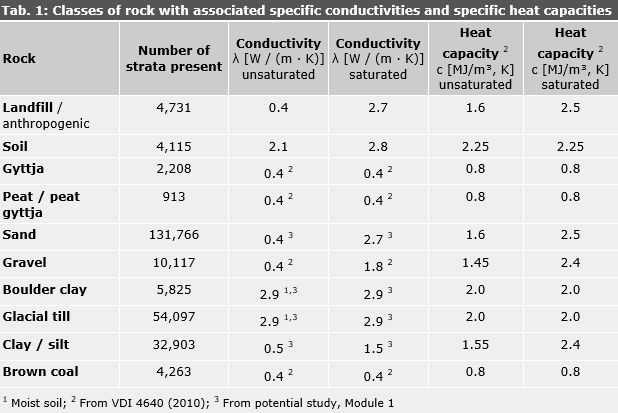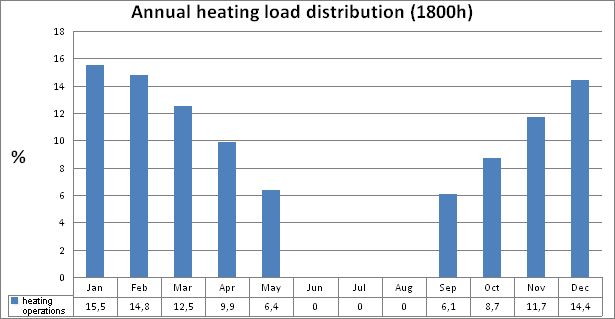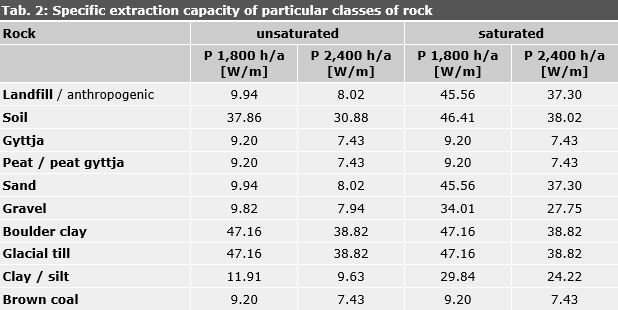In order to determine the specific extraction capacity of the ten classes of rock, a model approach using the Earth Energy Designer (EED, Version 3.16) was used. The case calculated was that of the energy load of a single-family home, close to real conditions, with identical marginal conditions for each class of rock. Only the rock-specific parameters, conductivity and thermal capacity, were adapted. In that way, maximum heating yield for each class of rock, and from that, the specific extraction capacity, could be determined.
Marginal conditions for the ascertainment of specific extraction capacity
1. Marginal conditions of the site/heating requirement:
- mean temperature of the earth’s surface: 9° C
- arrangement of ground heat exchangers: 2 exchangers, 100 m in length each, 6 m apart
- borehole diameter: 180 mm
- volume flow per exchanger: 0.5 L/min (lower level of turbulence in fluid
- ground heat exchanger: 0.07 m
- conductivity of the backfill: 1.5 W/(m*K)
- coolant: mono-ethylene glycol, 25 %
- borehole resistance: corresponds to above design
- simulation period: 25 years
- annual coefficient of performance: 4.3 (subsidy guideline of the Federal Office of Economics and Export Control/ BAFA)
- minimum temperature marginal condition of fluid: 1.5° C
2. Marginal conditions of the groundwater/minimum soil temperature:
- groundwater flow: N/A
- subsoil temperature: constant at mean Berlin temperature (9° C)
3. Validity:
- Applicable only for small ground heat exchangers (two exchangers)
- For larger systems with more than two exchangers (even < 30 kW), corresponding reductions must be taken into account, since the interactive effect of the exchangers increases with their number.
Annual operating hours
The calculation of the extraction capacity refers to heating operations **without** hot water supply, with 1,800 operating hours per year for the heat pump (Maps 02.18.5-8); and for heating operations **with** hot water supply, with 2,400 operating hours per year for the heat pump (Maps 02.18.9-12).
The variations in annual heating load distribution are shown in Figures 2 and 3, for 1,800 and 2,400 operating hours, respectively. The share of hot water supply is constant, while the heating supply varies over the course of the year.




